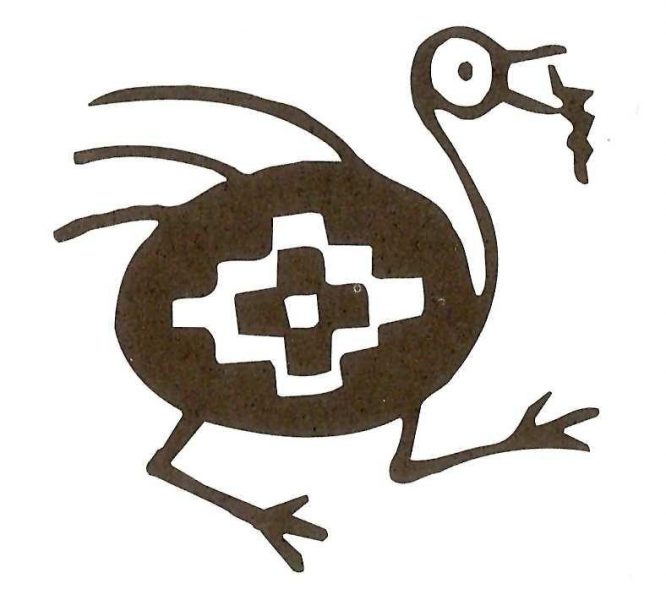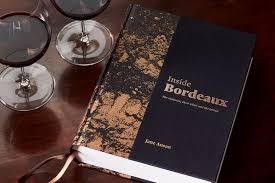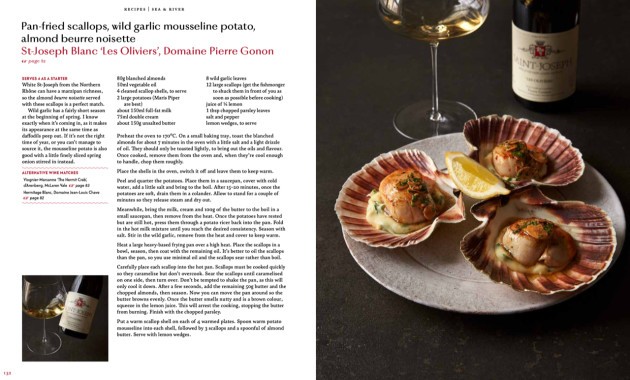‘Dazed & Confused’
As the planet Mercury forms a beautiful cosmic triangle with the crescent Moon and Spica this week. Mars also puts on a double bill with a giant red star called Mira. Literally, Mira is pulsating away up there. And if you manage to get out of bed, 5am’ish, towards the end of this Spring Equinox week you will also see Venus shining brilliantly as ever, and to her right shoulder, a little star, Regulus smiling away upon us. One of the benefits of living in the ass of the Southern Hemisphere is that we do have the cristal-clearest of night skies. The Southern Cross can normally be seen (the photograph depicts a Qechua Suri bird that represents the planetary Southern X) even if we are living in the middle of this busy, overpopulated & polluted city. Feliz Primavera! and for our friends in the northern hemisphere, Michaelmas is close by. Enjoy! as they used to say in restaurants and cafes when they were open, a long time ago now.

Coming down to Earth for a moment now, as I have a few things to share with you, dear reader, customer and lover of all good things tremendously vinous. I know that I am not the only one still bewildered by our, man’s reaction to the 2020 plague, and now we are into our 199th day of self-incarceration here, needless to say feeling a tad jaded and just a little confused as to what the hell is really going on. My weekly virtual-visits to the life-saving 67 Pall Mall wine-zoomers have done nothing but bring me a huge amount of lunchtime pleasure along with some much needed and new-found knowledge, and in this case about two important wine issues that bring me to put pen to paper. Firstly, I must thank Jane Anson (Bordeaux championette) for her clarity on various Claret facts, and some other bits that quite frankly left me almost speechless. Congrats!

Firstly, I had no idea (and why should I) that one of the jewels to be found in the village of Pauillac, the ridiculously expensive First Growth Claret, Ch.Lafite-Rothschild owns 4 and a half hectares of vines in the village of St.Estephe. The usual grape mix to be found in Lafite would be Cabernet Sauvignon (70%), Merlot (25%), Cabernet Franc (3%) and Petit Verdot (2%). Now, guess where the Cabernet Franc comes from? Yip, you are right, St.Estephe. As the village of Pauillac neighbours St.Estephe, and as Lafite have been growing grapes and making wine there well before the 1855 Classification. They still have permission and are allowed to continue blending grapes from St.Estephe into their wines from Pauillac. In one sense I think that this is terrific, as good grapes should, of course, be harvested and used to make great wine, wherever. But when the rest of the grown up wine world seems to get their knickers into a twist over boundaries, grape varieties to be used, amounts of this and that blended and permitted in winemaking. Let alone having to follow the stringent wine rules laid down by the local authorities. Didn’t G.Duboeuf go to prison, or something, as it turned out that his Gamay grapes where also being delivered in from outside the Beaujolais region. Wasn’t some fellow down in Oz fined millions for blending his Hunter Shiraz with too much Mudgee Shiraz, and of course we’ll never forget the recent lawsuit against the head of a huge Chablis producer for blending grapes from the Rhone Valley and I believe also from Provence. Not just a one-off blending, but this went on for decades. We all know that Chablis must be made from Chardonnay and Chardonnay grown within the Chablis and Petit Chablis zones. Millions of his bottles of Chablis have been shipped worldwide and drunk, probably even at professional tastings, and nobody knew that the wines were infact not Chablis. I am smiling a bit, as of course I remember in 1960s, my father serving red wines at home for Sunday lunch that went by the names such as Pontet-Canet, Talbot, Nicolas’s Vin de Table Rouge and a Spanish Tinto that came in litre bottles, knowing very well that the weight, the fruit and the alcohol in these wines all came from Algerian vines. Not today of course.
So this is how it goes and I am sure that you now get the picture here. Doesn’t it seem just a little odd that there is no mention of the Lafite Cabernet Franc connection, anywhere. Anyway, I feel enlightened by Jane’s almost fleeting comment in the Bordeaux tasting the other day, and thank you! I look forward to receiving your, Jane!, latest (signed please) book ‘Inside Bordeaux‘ once the Argentine postal service decides that books are not as dangerous as the plague, and they wouldn’t mind getting off their bottoms and firstly delivering my copy of R.Scruton’s Parsifal (ordered back in February’20) that’s been sitting down there for six months, quarantined up and ready to be shipped back to Izzy in Wiltshire as it has passed its date of non-delivery. And then please can someone bring Jane’s weighty tome here, and not to forget the new recipe book from our chums at 67 Pall Mall.
 The other revelation and I am of course very grateful indeed for it, as another illusionary removal-service began the other day in a splendid talk and taste about Ch.Palmer (Margaux) and that propertie’s second wine, Alter Ego de Palmer. A wine which we have blogged on about a lot over the last years, as it’s quite simply terrific. I learnt, or was reminded that Alter Ego is one of the only Bordeaux Second wines that could possibly be, according to me, really called a Second wine. The juice is infact the same juice that comes from the Grand Vin, Ch.Palmer. In my naivety I had imagined and thought over the last 35+ years that is, that all Second wines from Bordeaux where made from grapes and wine from the mother chateau as it where. The majority of second wines, a good example could be at Ch.Latour, ‘Les Forts’, was made from younger vines on the property and maybe blended after a separate fermentation, with a little bit of the Grand Vin to make their second wine. I also thought that in less favourable vintages, a chateau may even choose to release only a second wine rather than release a smaller than normal quantity of it’s Grand Vin, a wine that would not be consistent with past vintages. Some have been doing this since the 18th Century, but recently I can see that as the Grand Vins have just become so expensive to drink that the idea of a Second wine from the same property at a more reasonable price is a super chance to drink a wine from that chateau at a much more reasonable price, so long as it actually does come from the property and lives up to its great reputation. By the way, did you know that there were also third wines and even fourth wines produced? I didn’t. Well okay, in Pauillac (Ch.Latour has Les Forts & Le Pauillac) yes, but the rest, I really had no idea at all about 3rd and 4th wines, and I am in the wine business for goodness sake.
The other revelation and I am of course very grateful indeed for it, as another illusionary removal-service began the other day in a splendid talk and taste about Ch.Palmer (Margaux) and that propertie’s second wine, Alter Ego de Palmer. A wine which we have blogged on about a lot over the last years, as it’s quite simply terrific. I learnt, or was reminded that Alter Ego is one of the only Bordeaux Second wines that could possibly be, according to me, really called a Second wine. The juice is infact the same juice that comes from the Grand Vin, Ch.Palmer. In my naivety I had imagined and thought over the last 35+ years that is, that all Second wines from Bordeaux where made from grapes and wine from the mother chateau as it where. The majority of second wines, a good example could be at Ch.Latour, ‘Les Forts’, was made from younger vines on the property and maybe blended after a separate fermentation, with a little bit of the Grand Vin to make their second wine. I also thought that in less favourable vintages, a chateau may even choose to release only a second wine rather than release a smaller than normal quantity of it’s Grand Vin, a wine that would not be consistent with past vintages. Some have been doing this since the 18th Century, but recently I can see that as the Grand Vins have just become so expensive to drink that the idea of a Second wine from the same property at a more reasonable price is a super chance to drink a wine from that chateau at a much more reasonable price, so long as it actually does come from the property and lives up to its great reputation. By the way, did you know that there were also third wines and even fourth wines produced? I didn’t. Well okay, in Pauillac (Ch.Latour has Les Forts & Le Pauillac) yes, but the rest, I really had no idea at all about 3rd and 4th wines, and I am in the wine business for goodness sake.

These are some of the more famous second wines from the big names in Bordeaux and an idea of their history. I hope you find it as interesting as I did.
Château Mouton Rothschild, Petit Mouton
1993 was the first vintage made. They of course made Mouton Cadet, remember that one, since the 1930s. A great branded Bordeaux that back in the day actually contained Grand Vin in it’s final blend. Carruades de Mouton was made in 1927 and the entire Grand Vin harvest went into it.
Château Lafite Rothschild, Carruades de Lafite
Comes from a separate part of the Lafite estate, called the plateau of Carruades. In 1840 the Rothschilds bought this land as the quality of the grapes was superior to what was being harvested on the estate. The grapes for this second wine come from lots all over the estate. The second wine used to be called Moulin de Carruades, until 1986 when the first vintage of Carruades de Lafite appeared.
Château Margaux, Pavillon Rouge
Another first growth second wine, as it were. Pavillon Rouge has been made at the property since 1906 and was first made as a back up wine, in case the Grand Vin grapes didn’t make the mustard for that year. Remember they where just recovering from the phylloxera plague. They then stopped making Pavillon Rouge up until the 1970s when they produced a 1975 vintage, and from then on every year, vintage, we can find the wine available.
Pavillon Blanc, by the way, is older than Pavillon Rouge, and is actually a Grand Vin Blanc (like Ch.Haut-Brion Blanc) and is NOT a second wine. Do you get that?
Château Cos d’Estournel, Les Pagodes de Cos d’Estournel
Made from young vines at Cos. 1994 was the first vintage they produced. The grapes come from a plot on the estate called Marbuzet. It’s one of the cheaper second wines, and sorry but I have never found it to be particularly good.
Château Ducru-Beaucaillou, Croix de Beaucaillou
1995 was the first vintage of Croix to be made and it comes from a 30 hectare plot that is not at the chateau, but nearby.
Château Pichon Longueville Comtesse de Lalande, La Réserve de la Comtesse
One of the oldest of the second wines made and has more Merlot in it’s blend than any other Pauillac property. 1973 was the first vintage produced, but they have been making a second wine there since the late 19th century. 11 hectares of their vines are actually in St.Julien, and the wine is now called, simply, Comtesse.
My three favourite Second Wines of all time are:
Château Montrose, La Dame de Montrose
Château Palmer, Alter Ego
Château Lynch-Bages, Echo
Château Léoville-Las Cases, Clos du Marquis now called Le Petit Lion
A successful second wine should apparently reflect the style of the appellation, whereas the Grand Vin is showing off the qualities of the estate and the appellation. So in this drive to higher quality that has taken place in recent times, some Bordeaux châteaux have added a second wine, just like that. And with the increased market competition since the 1980s, estates became more selective in the assemblage stage, making greater parts of the production disposed to be either sold off in bulk, or blended into their second (or even third) wine.
Some selection takes place already after harvest, when plots that are often underperforming or are planted with younger vines will be earmarked for the second wine, which means that they receive a “cheaper” treatment with a lower percentage of new barrels. Additional selection will be done after the barrel aging when the winemaker will isolate the best performing barrels that most reflects the house style of the estate label with the remaining wine being bottled under second or even third and fourth labels. Second wines often do not have the word “château” in their name, but they frequently sport some other part of their winery’s name to add name recognition. The second wines of classified growths, since they are different wines, are not themselves part of the 1855 classification or other classifications. They are, however, entitled to use the same appelation as the Grand Vin, as they originate from the same terroir. As an example, Les Forts de Latour is an AOC Pauillac just like Château Latour, but is not a First Growth or any other kind of classified growth for that matter.
A small list of third wines, just for the record:
Le Pauillac de Chateau Latour
Margaux de Chateau Margaux
Chateau Segonnes (Ch.Lascombes)
Le St.Estephe de Chateau Montrose
Pauillac de Lynch-Bages
Baronne Caroline (Ch.Cantemerle)
‘Been dazed and confused for so long it’s not true. Every day I work so hard, bringin’ home my hard earned pay’.
“By J.Page – Inspired by Jake Holmes.”